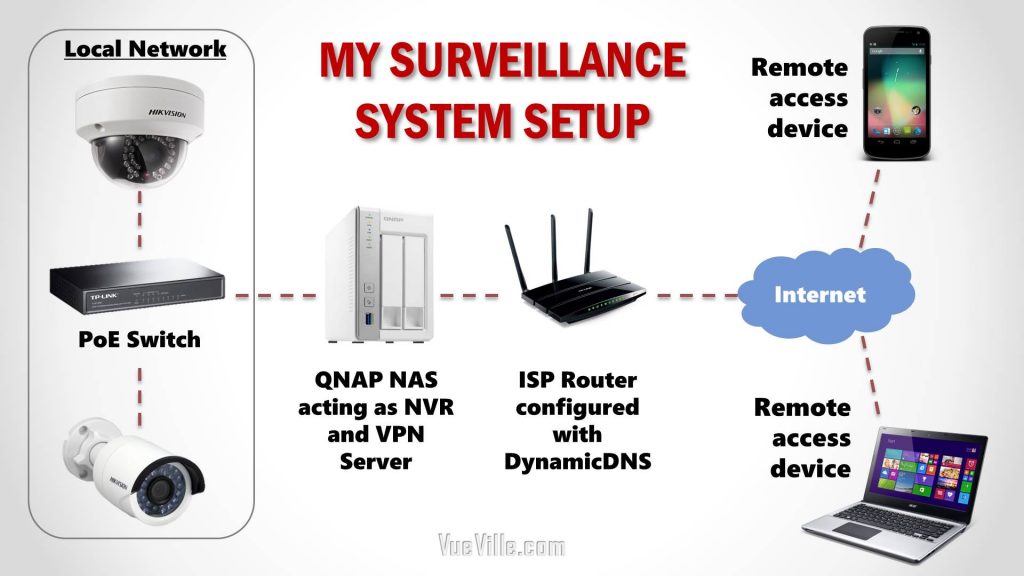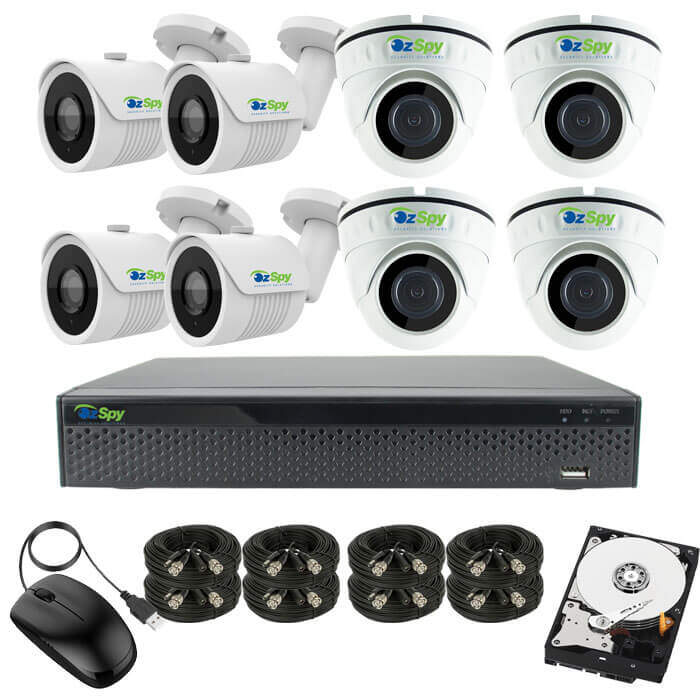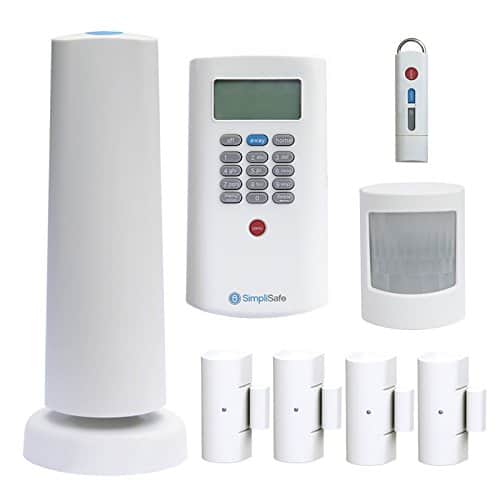Table of Content
And you'll only have to replace its batteries ever 3,000 or 4,000 times it lights up. With the affordable, reliable, and easy to use home security devices on the list we've compiled, your residence will be more resistant to forced entry and better ready to sound the alert should a break-in occur. Best of all, none of them require professional installation, nor will they markedly alter the home in any way. An upgrade to the previously mentioned intruder alarm system is this wireless Arduino-based motion detector.

Only you know what kind of security and home automation features you need for your home. Traditional home security companies will send someone to install your system and try to upsell you on a bunch of products you don’t even need. They can be configured to fit specific needs, as well as the option to add additional components. These DIY home security systems not only help protect lives and property, but also satisfy every need and budget. You won’t have to worry about paying someone else to do it for you because when it comes to these security systems that are reviewed below, you’ll have no problem taking a little bit of time out of your day to set these up.
Smart Thermostats
Highly-trained professionals monitor 24/7 and know precisely what to do during an emergency when every second counts. The Security Sensor detects vibrations and sends a wireless signal to the control panel or emergency number to alert. This allows for quick and easy access of the premises in real time in the instance of an alarm notification. These cameras included are 2MP high resolution 4mm fixed lens IP cameras that are going to be connected using Cat5e cables for a simple and easy setup no matter who is trying to set these up. The advanced IR filter can help capture objects up to 130 feet away in the daylight and nearly 80 feet away at night. The construction of the cameras is a heavy and durable metal and it is completely waterproof so it can be used both indoors and outdoors.

With professional monitoring, you pay a monthly fee and a monitoring center will alert you and the proper authorities when needed. Unlike traditional systems, most DIY systems don't require a long-term commitment. In fact, with some systems, you can activate professional monitoring only when you feel it's necessary, such as when you go away on vacation. With DIY systems, you order everything online and the company ships you the equipment along with step-by-step installation instructions. You can monitor these systems yourself using a mobile app, but many DIY companies also offer flexible, no-contract professional monitoring plans. Frontpoint is one of the lesser-known brands on the market for security systems, but when it comes to extra features, the Frontpoint Safehouse Pack is a strong contender for keeping your home safe.
Compare DIY home security systems
We recently added notes on water-leak sensors for each of our top picks. We also plan to test glass-break sensors from Ring, SimpliSafe, and Abode, and will update this guide with our findings. Abode offers more smart-home integration than any other security system we tested, which means you can tie it into smart-home devices from different manufacturers. The original Ring system is easy to use and inexpensive to set up, and has more camera add-ons than any of our other picks. Ensure that your subscription plan includes storage for video recordings. We wanted our rankings to fit what folks want from self-install home security systems—so we surveyed our readers directly.
He has over nine years of experience researching, testing, and reviewing the latest tech—he was the Smart Home Editor for Top Ten Reviews and wrote for ASecureLife before joining SafeWise as a Staff Writer in 2020. John holds a Bachelor's degree in Communications, Journalism emphasis from Utah Valley University. In his spare time, he enjoys hiking, photography, cooking, and starting countless DIY projects he has yet to complete. Wyze's biggest blindspot is a lack of cellular backup, so it won't work if your internet goes down like other brands on our list (at least there's a battery backup for power outages).
Home Security Cameras
It’s easy to set up and use, can be customized with a large selection of compatible add-ons, and features an optional, affordable monitoring plan ($20 per month or $200 per year). The Ring Alarm Pro doesn’t have the ability to integrate with as many third-party smart-home devices as our other picks, but it does have a built-in Eero Wi-Fi 6 router . This means the base station can both serve as the brains of your security system and replace your current Wi-Fi router (it can be set up as a mesh Wi-Fi network, too, which may improve your Wi-Fi’s range and performance). The Eero router also provides backup internet access via a cellular connection , should you have a power or internet outage.

For instance, some people may want monitoring only when they’re on vacation; no-contract systems let you come and go as you please. They also cost less in the long run and allow you to be in total control of the equipment you use, as well as how and when you use and pay for monitoring services. While many homeowners assume that professionally installed wired security systems are safer, most wireless security systems on the market provide the same security. With reliable batteries and the option to include smart home monitoring, wireless security systems can be just as safe as professionally installed options. Wireless security systems also often have strong app integration, which offers the benefit of notifications and remote control from anywhere using your smartphone.
We enjoyed our time testing Wyze, but we wish it had a self-monitoring option that doesn't require a subscription. For example, we didn't like how the CUE automations and some settings weren't very accessible through the Abode app during testing. On another occasion, we struggled with some glitches in the Abode app while recording video with the Abode Iota's camera—it's over three years old at this point and the hardware may be showing its age. The Frontpoint app did a poor job sending notifications, even when a pet sitter accidentally set off the alarm. That's a bummer because you should expect alarms to instantly trigger a notification. As for the cameras, they feel pretty basic for the price—especially compared to standalone cameras from Wyze and Ring.

We dismissed the Eufy Security 5-Piece Home Alarm Kit due to its lack of add-ons. It offers no glass-break sensors, panic buttons, flood sensors, or smoke detection. We do like the option to use the Eufy as a self-monitored system or with a $10-per-month monitoring plan, even though the latter doesn’t include cellular backup. Unlike the Ring and Abode base stations, SimpliSafe’s provides voice prompts during setup, as well as when the system is arming and disarming. When the system is triggered, the keypad beeps to prompt you to enter your passcode before the siren starts blaring. We didn’t consider alarm systems that require professional installation.
Before discussing security brands, it’s important to understand what a DIY security system is. A DIY security system is a series of connected devices that are used inside and outside the home to offer protection. The DIY aspect of the system means that a homeowner or renter will install the components themselves. With no lock-in contracts and optional monitoring,SimpliSafeis one of the top home security solutions for customers without a ton of money to spend. The company has been in business for 12 years and boasts an A+ rating with BBB. SimpliSafe’s good reputation with customers stems from its sleek, user-friendly, self-manufactured equipment, flexible pricing and optional monitoring.
Signing up takes minutes, and you can get a hassle-free quote instantly. Overall, Link Interactive is a great choice for home security compared to some of the bigger names in the industry due to the wide range of equipment options and pricing flexibility. Always verify that your DIY house alarm system doesn't have a contract (our top five picks don't require contracts) since it might renew for a new term if you move. Generally, DIY systems come with peel-and-stick sensors that attach directly to the wall. They are usually easy to remove, and you can replace the adhesive in your new place. While we like Kangaroo , it doesn't offer much smart home compatibility aside from Alexa and Google voice controls.
No comments:
Post a Comment